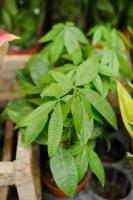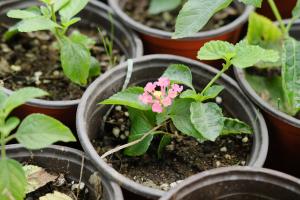What Time is the Best Time to Plant Fig Trees?
Fig trees are a fantastic addition to any garden, providing delicious sweet fruit and a striking aesthetic. However, the timing of planting is critical for the fig tree to grow healthy and productive. If you want to know the best time to plant fig trees, this article will cover everything you need to know.
Understanding Fig Tree Growing Conditions
Before we delve into the best time for planting fig trees, it is essential to understand growing conditions. Most species of fig trees are hardy, drought-tolerant, and will grow well in different soil types. However, fig trees require specific growing conditions to thrive. They grow particularly well in warm, dry climates, and need well-draining soils.
Fig trees also require a lot of sun, at least six hours a day, and prefer temperatures between 60 to 100 degrees Fahrenheit. It is crucial to select a planting location that meets these conditions to encourage healthy growth.
Best Time to Plant Fig Trees in Spring
Spring is the most popular time for planting fig trees. Typically, the optimum time for planting fig trees is in late winter to early spring, depending on the region. You should aim to plant fig trees once the threat of frost has passed and when the soil is warmer than 50 degrees Fahrenheit.
The temperature is a critical factor in planting fig trees. If the soil temperature remains lower than 50 degrees Fahrenheit, the plant may struggle to establish itself, and the roots may not grow. Additionally, if the temperature is too high, the young roots may burn and die, leading to stunted growth, root rot, and a lack of fruit.
Best Time to Plant Fig Trees in Fall
While spring is typically the ideal planting time, fall can also work for planting fig trees. In warmer regions, you can plant fig trees in early fall, around September or October. In contrast, in cooler regions, planting the tree in mid-fall is ideal, just before the soil freezes.
The advantage of planting in fall is that the fig tree has time to establish its root system before the winter dormancy period. If the fig tree is established before winter, it can spring up healthy roots and become well prepared for a robust growth season in the following year.
Tips for Planting Fig Trees
When planting fig trees, the following tips can make a significant difference in their growth:
Ensure you choose a planting location with six or more hours of sunlight.
Ensure the soil is well-draining and has a balanced pH level between 6.0 and 6.5.
Invest in high-quality soil and fertilizers that encourage strong root growth.
When planting, make sure the tree is at the same level that it was when purchased from the nursery.
Water the tree immediately after planting, and ensure the soil stays moist throughout the growing season.
Mulch the base of the tree with organic matter to help retain moisture and control weeds.
Prune the fig tree before planting to encourage healthy growth and increase yield the following year.
Conclusion
In conclusion, the best time to plant fig trees depends on the growing region and the type of fig tree. Generally, planting in spring provides the perfect growth conditions to establish healthy roots. However, with proper preparation and care, fall can also be ideal. Remember to select a sunny location with well-draining soil that has a balanced pH level, and invest in quality soil and fertilizers for optimal growth. With these tips, you can ensure your fig trees thrive and provide delicious fruit for years to come.

 how many times do yo...
how many times do yo... how many planted tre...
how many planted tre... how many pine trees ...
how many pine trees ... how many pecan trees...
how many pecan trees... how many plants comp...
how many plants comp... how many plants can ...
how many plants can ... how many plants and ...
how many plants and ... how many pepper plan...
how many pepper plan...






























